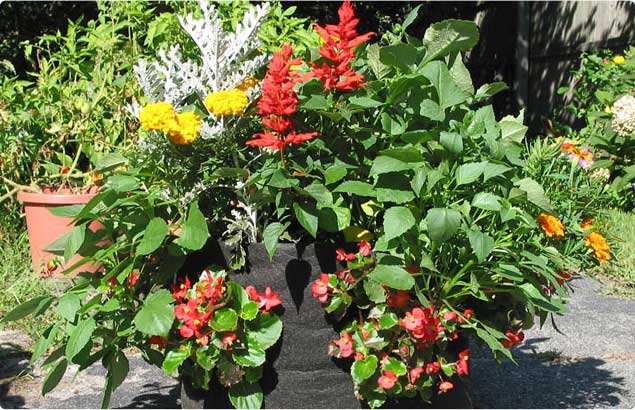Raised Bed Gardening Made Easy
Raised bed gardening can’t be beat for its ease and efficiency, not to mention its ability to save gardeners time, space, and money. With little wasted space, raised beds are high-yielding and easy to maintain.
The Benefits of Raised Bed Gardening
Raised bed gardens don’t require as much effort as in-ground gardens. There’s no sod-stripping or deep tilling required to install a raised bed garden. And because raised beds are filled with high-quality soil, gardeners don’t have to deal with the same challenging soil issues that in-ground gardeners do, such as rocks or heavy clay soil.
In general, raised bed gardening requires less time. If they’re properly planted and maintained, raised bed gardens seldom need to be weeded, nor do they need to be tilled every spring. Because the beds are not walked on and compacted, a light cultivation is all that’s needed.
With raised beds, there’s no need to mulch pathways or navigate expansive rows to harvest and care for crops. Everything is at your fingertips.
The Challenge
The biggest stumbling block to raised bed gardening is the construction of the beds themselves. The idea of building costly wood frames, buying an expensive, pre-fab kit, or hauling in heavy stone or blocks to create the frames prevents many gardeners from growing in raised beds. The effort required to construct the beds themselves is all too often a limiting factor.
But, there’s a simple way to get around this obstacle.
The Solution
Instead of taking the time to assemble frames, build your garden with light-weight fabric beds. Manufactured in different sizes and colors, fabric beds are an excellent way to have an affordable, productive, instant raised bed garden.
Fabric raised beds keep roots well-aerated and provide the perfect level of drainage for garden plants. When filled with a blend of 50% compost, 25% high-quality potting soil, and 25% garden soil, they easily support a broad diversity of vegetables, and provide ample harvests with very little time and effort.
What To Grow in Fabric Raised Beds
Any vegetables that can be grown in the ground can also be grown in fabric raised beds. From root crops and leafy greens to tomatoes and beans, nearly every vegetable can be grown in these beds. What’s more, your fabric raised bed will produce higher yields so you have more fruits and vegetables throughout the season.
Caring for Gardens Planted in Fabric Raised Beds
Because they are above ground, raised beds tend to drain quickly, a trait that’s great for early spring plantings. Therefore, you will want to irrigate fabric raised beds religiously when the weather is hot and dry.
Mulching fabric raised beds with a two-inch thick layer of straw or shredded leaves not only cuts down on watering needs, it also limits weeds and adds nutrients to the soil. Be sure to mulch beds soon after planting.
Amend the soil in your fabric raised beds every spring by adding a few inches of quality compost. This yearly addition of organic matter revives the soil and feeds plants all season long.
It’s not hard to see how fabric raised beds make easier than ever!







How long does each one last on average?
They can last up to 2-5 years with proper care. This of course depends on the elements, care, storage, etc. We hope this helps!
They can last up to 2-5 years with proper care. This of course depends on the elements, care, storage, etc. We hope this helps!
Thank you!
What fabric is used to make the sacks?